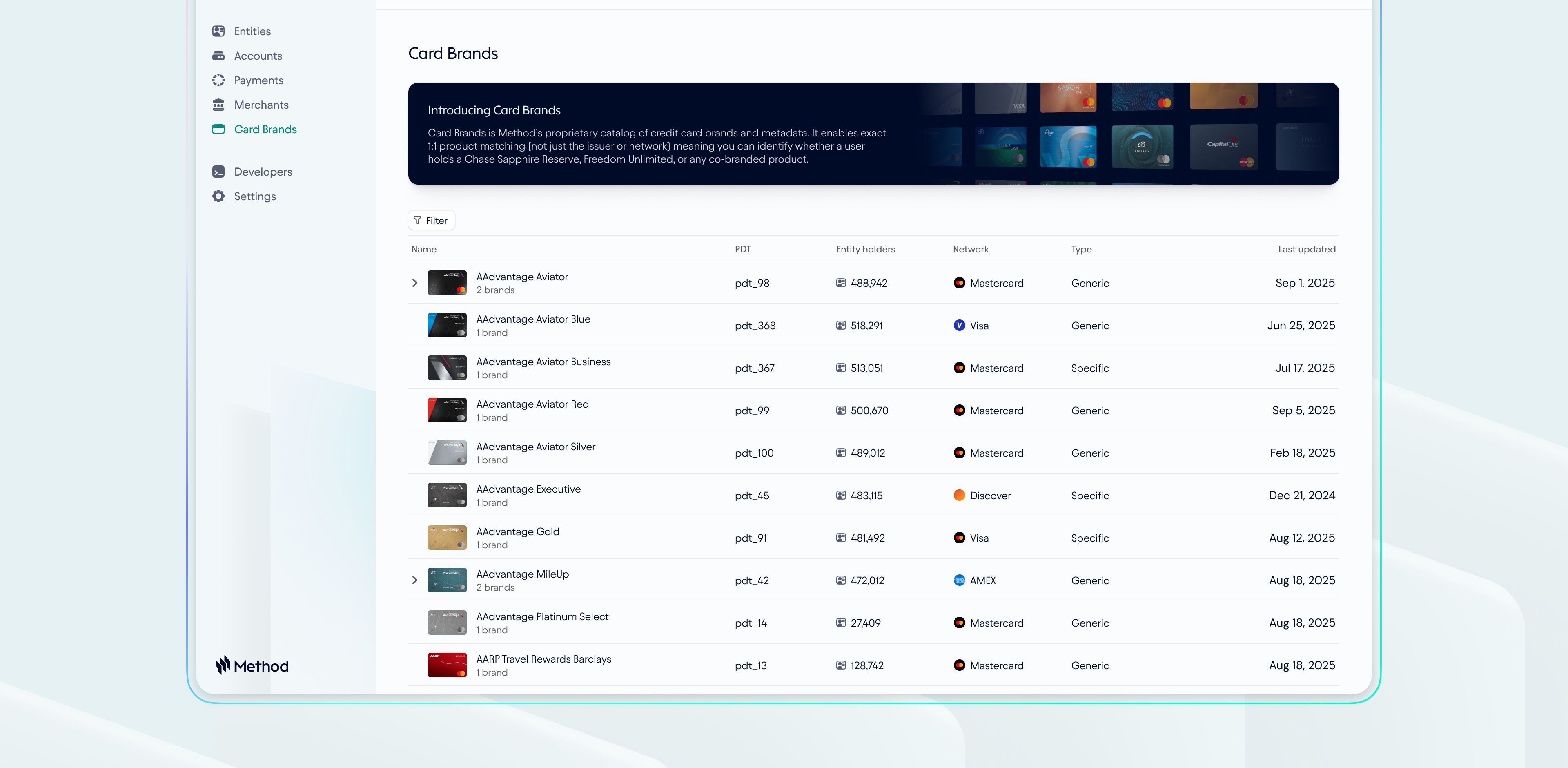New Features
Dashboard Updates
Card Brands Directory
 We released a new tab in the Method Dashboard – Card Brands – displaying Method’s proprietary catalog of credit card brands and metadata. This dataset underpins the Card Brands API, which enables exact 1:1 product matching for each credit card in a user’s wallet, meaning you can identify the specific card brand a user is holding. For example, instead of just knowing a user holds a Chase Visa, you can determine if they hold a Chase Sapphire Reserve, Freedom Unlimited, or any co-branded product.
For access to the Card Brands Directory, please contact your Method CSM.
New Role: Restricted Member
You can now invite teammates as a Restricted Member. This role is the same as the Member role, except Restricted Members have no access to view end-users PII.
We released a new tab in the Method Dashboard – Card Brands – displaying Method’s proprietary catalog of credit card brands and metadata. This dataset underpins the Card Brands API, which enables exact 1:1 product matching for each credit card in a user’s wallet, meaning you can identify the specific card brand a user is holding. For example, instead of just knowing a user holds a Chase Visa, you can determine if they hold a Chase Sapphire Reserve, Freedom Unlimited, or any co-branded product.
For access to the Card Brands Directory, please contact your Method CSM.
New Role: Restricted Member
You can now invite teammates as a Restricted Member. This role is the same as the Member role, except Restricted Members have no access to view end-users PII.
Improvements
Simulate API
The Simulate API now supports simulating Connect and Attributes behaviors for an entity — making it easier for developers to test how Method responds to various data changes without needing to trigger them in production.
Simulate Connect API
- You can now configure Connect behaviors such as new_credit_card_account. This is useful when testing account-creation flows or verifying how your system handles new data returned from a subsequent Connect. For example, after configuring this behavior, the next time you execute Connect for that entity, a new credit card account will appear in the response — helping you simulate real-world user events like a customer opening a new card.
Simulate Attributes API
- Similarly, you can configure Attribute behaviors such as new_soft_inquiry to test how your system reacts to changing credit attributes. On the next Attributes request for that entity, the configured behavior will be applied (e.g., a new soft inquiry will be present).
This API is available in the development environment only.
